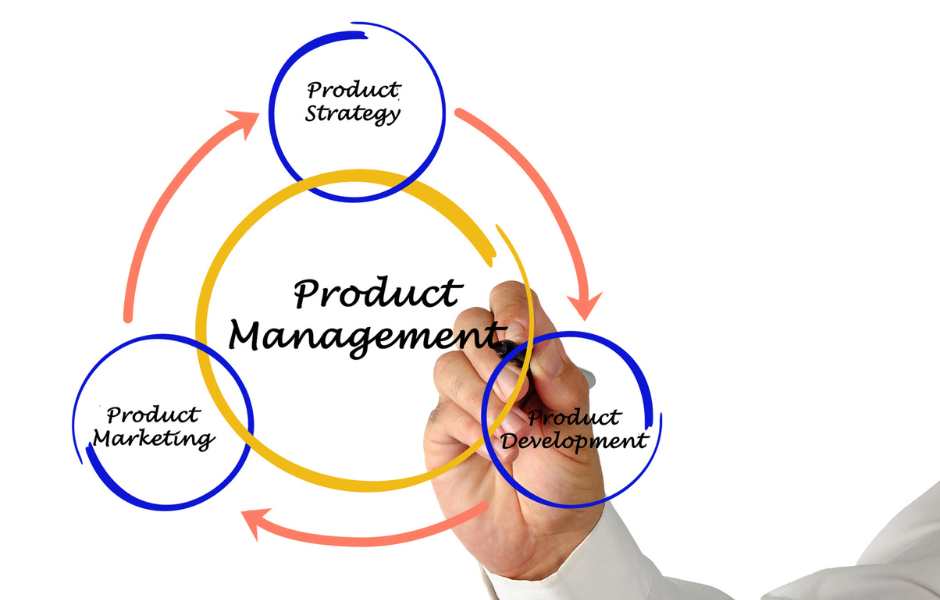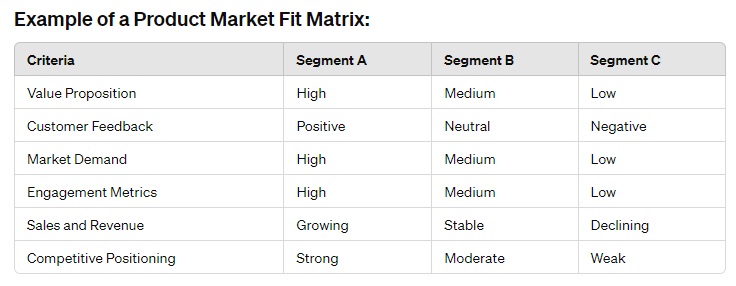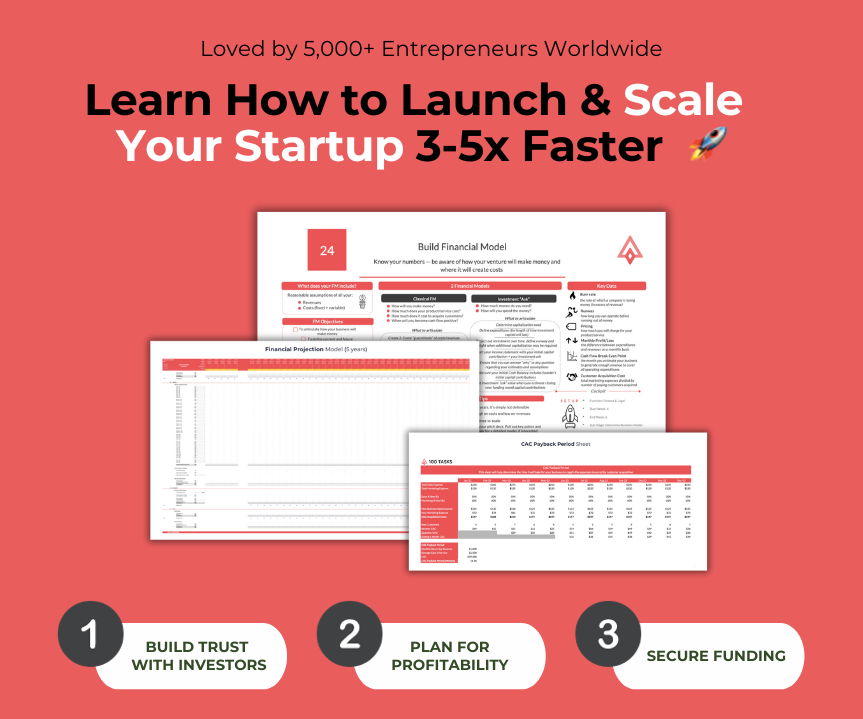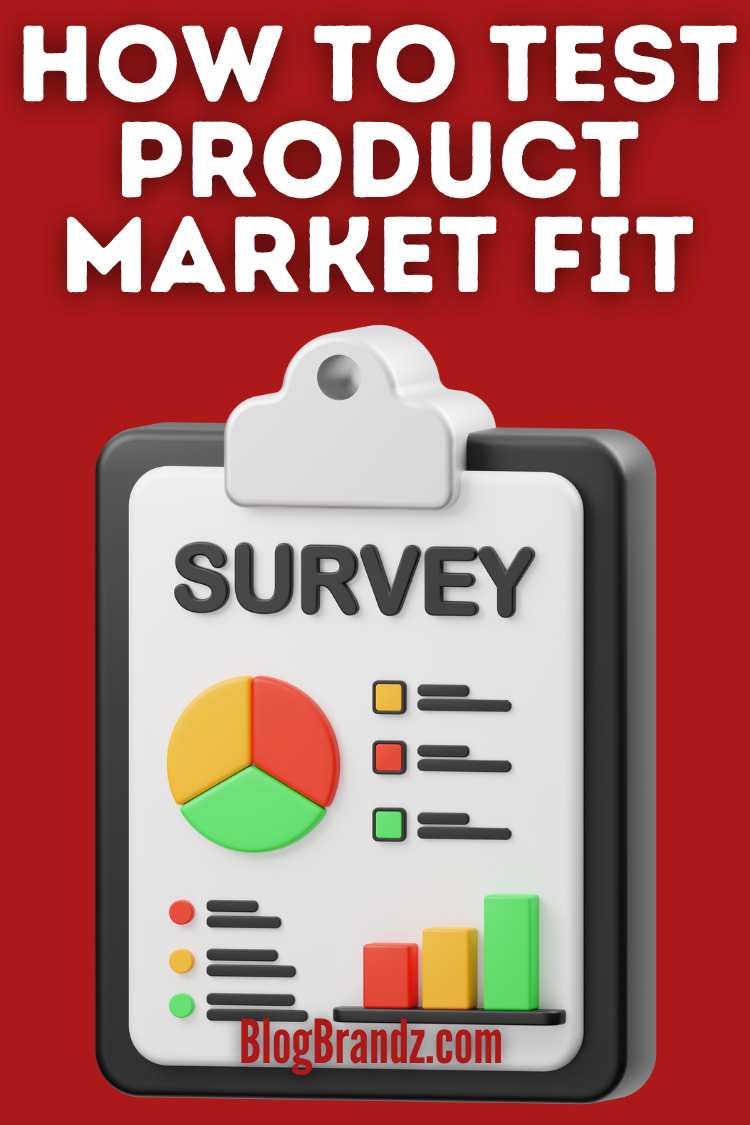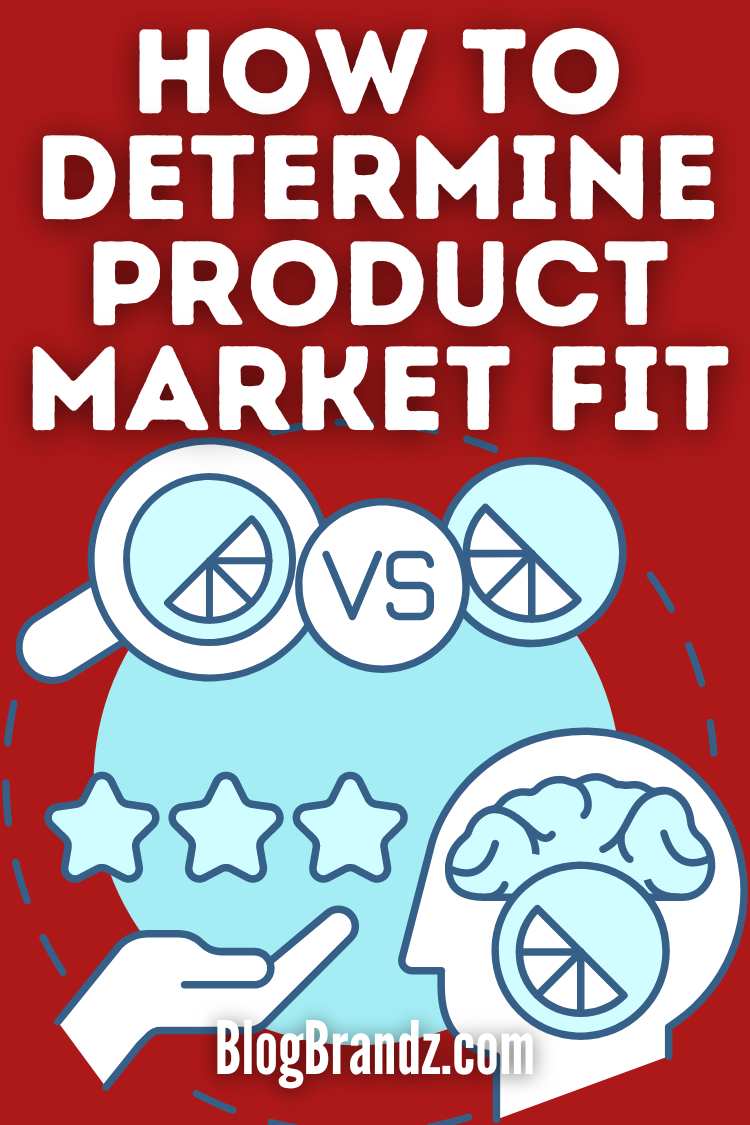Learn how to find, measure, and validate product-market fit to ensure your product meets your target market’s needs and succeeds in the marketplace.
Contents
- What is Product-Market Fit?
- Why is Product-Market Fit Important?
- Best Product-Market Fit Courses
- #1. A Recipe for Achieving Product/Market Fit
- #2. How to Find Product-Market Fit
- #3. Attaining Product-Market Fit: A Proof of Concept Guide
- #4. How-To: Customer Interviewing to Create Successful Products
- #5. Fast Track to MVP: Lean Strategies for Product Innovation
- #6. Discover, Validate & Launch New Business Ideas with ChatGPT
- #7. The Ultimate Founders Checklist to Launch & Scale Your Startup
- Best Product Market Fit Books
- Product Market Fit Framework
- How To Identify Product Market Fit
- What is the Product Market Fit Pyramid?
- What is a Product Market Fit Canvas?
- What is a Product Market Fit Matrix?
- What is Superhuman Product Market Fit?
- Business Tips & Tutorials
What is Product-Market Fit?
What does product market fit mean? Product-market fit (PMF) is a crucial concept in the world of startups and product development. The definition of product-market fit is the stage in a product’s lifecycle where it meets the demands of the market.
Product market fit involves the relationship between a product and its target market. It assesses how well the product satisfies the needs, desires, and preferences of the market.
To define product-market fit is to describe the alignment between a product and its market when it has achieved product-market fit. It means it has fulfilled the market need intended to address, and there is significant demand for it among customers.
Why is Product-Market Fit Important?
Product-market fit is crucial because it indicates that a business has developed a product that meets the needs and desires of its target market.
This alignment between product and market drives sustainable growth and long-term success. Here are some key reasons why product market fit is important:
- Customer Satisfaction: When a product meets market needs, customers are more likely to be satisfied, leading to positive word-of-mouth and customer loyalty.
- Revenue Growth: A product that fits the market well will attract more customers, driving sales and revenue growth.
- Resource Efficiency: Achieving product-market fit ensures that resources are used effectively. Businesses can focus their efforts on scaling a product that has already proven to be desirable rather than constantly adjusting or pivoting their offerings.
- Competitive Advantage: A strong product market fit can differentiate a business from its competitors, making it harder for others to replicate its success.
- Investor Confidence: Investors are more likely to fund businesses that demonstrate product-market fit, as it shows the potential for profitability and long-term viability.
- Market Positioning: It helps a business establish a strong position in the market, making it a go-to option for customers seeking solutions in that particular niche or category.
- Adaptability and Innovation: Understanding the market’s needs allows businesses to innovate and adapt their products, keeping them relevant and competitive over time.
Best Product-Market Fit Courses
Learn how to achieve product-market fit with these courses that cover topics such as market research, product development, customer feedback, and iteration strategies.
#1. A Recipe for Achieving Product/Market Fit
Achieving product/market fit requires a clear strategy. This course on how to achieve product-market fit focuses on four key steps: First, allocate your resources wisely between existing and new customers.
Second, segment your customer base to identify future adopters. Third, streamline your product by removing unnecessary features. Finally, stop guessing and start following this recipe for success.
Click here to preview this course
#2. How to Find Product-Market Fit
This course on how to determine product-market fit offers a practical, step-by-step approach to finding product-market fit through customer-focused experimentation. You’ll learn to formulate hypotheses, design experiments, and analyze data to assess your ideas effectively.
By engaging with your customers, not just testing on them, you’ll gain actionable insights. The course addresses common challenges, such as identifying early adopters, determining MVP features, pricing strategies, and more.
It provides a clear roadmap for testing, helping you navigate the complexities of finding product-market fit faster and with more confidence. Covering customer interviews, opportunity sizing, A/B testing, and scaling strategies, this course equips you with the tools to succeed in today’s competitive landscape.
Click here to preview this course
#3. Attaining Product-Market Fit: A Proof of Concept Guide
Embark on your Proof of Concept (PoC) journey with this comprehensive guide, covering key steps from hypothesis validation to market analysis.
Understand the significance of PoC in business, conduct thorough market research, and master the art of hypothesis testing. Learn lean startup principles for efficient MVP development and prototyping.
Explore feasibility studies, engage in insightful customer interviews, and analyze competitors to identify market gaps. Utilize data collection methods like surveys and A/B testing for informed decision-making.
Gain inspiration from real-world PoC success stories and plan scaling strategies for post-validation growth. This guide provides a roadmap to navigate the complexities of attaining product-market fit with confidence.
Click here to preview this course
#4. How-To: Customer Interviewing to Create Successful Products
Learn game-changing insights to build products, services, and brands that resonate with your customers. This step-by-step guide on Customer Interviewing to Create Successful Products teaches you how to find and interview customers effectively to unlock key insights.
Learn to avoid common traps that lead to new product failures and make critical decisions about features, user experience, positioning/branding, and marketing strategies. Understand how to position your product for maximum resonance and conversion.
Differentiate between nice-to-have and must-have features, and learn the art of running effective interviews. By marrying your vision with deep customer understanding, you’ll be equipped to build products that people love and need.
Click here to preview this course
#5. Fast Track to MVP: Lean Strategies for Product Innovation
Accelerate your product innovation journey with lean strategies tailored for your MVP in the Fast Track to MVP Course. Discover the essential steps of the Lean Product Process, from understanding product-market fit to identifying underserved customer needs.
Develop compelling value propositions, specify your MVP, and create a prototype efficiently. Learn how to apply principles of great UX design and test your MVP effectively with customers. Iterate and pivot as needed to enhance product-market fit.
Utilize agile development to build your product and measure key metrics. Use analytics to optimize both your product and business for success.
Click here to preview this course
#6. Discover, Validate & Launch New Business Ideas with ChatGPT
Embark on an entrepreneurial journey with this comprehensive course designed to help you discover, validate, and launch innovative business ideas using ChatGPT.
Learn how to engineer ChatGPT prompts for business ideation, brainstorm ideas effectively, and design processes to test them with real customers. Access a library of 100+ ChatGPT business prompts to kickstart your creativity.
Develop your entire marketing plan with ChatGPT’s assistance. Whether you’re an entrepreneur or an intrapreneur in a corporate setting, this course is tailored to help you succeed in bringing your business ideas to life.
Click here to preview this course
#7. The Ultimate Founders Checklist to Launch & Scale Your Startup
Systematically launch and scale your startup 3 to 5X faster with Martin Bell’s Ultimate Founders Checklist. It covers every aspect of the value chain, from ideation and fundraising to Minimum Viable Product (MVP) development and rapid scaling.
You’ll learn how to unlock the potential of your startup with the 100 Tasks Holistic Ecosystem — a bulletproof startup-building process with real-life cases covering the entire value chain designed to accelerate the growth of your business.
Click here to get the Ultimate Founders Checklist
Best Product Market Fit Books
These books on product-market fit provide valuable insights into understanding the relationship between a product and its target market, including how to identify customer needs, define value propositions, assess market demand, and achieve sustainable growth.
- Product Management’s Sacred Seven
- Trajectory: Startup: Ideation to Product/Market Fit
- The Lean Product Playbook: How to Innovate with Minimum Viable Products and Rapid Customer Feedback
- The Four Steps to the Epiphany: Successful Strategies for Products that Win
- Crossing the Chasm: Marketing & Selling Disruptive Products to Mainstream Customers
- Product Marketing Debunked: The Essential Go-To-Market Guide
- Product-Market Fit (Super Guides Book 30)
- Product-Market Fit Analysis: A Bootstrap Marketing Guide
Product Market Fit Framework
Finding product-market fit typically involves identifying target customers through market research, understanding their needs, and developing a minimum viable product.
Additionally, it means gathering feedback from early adopters, validating product ideas, and iteratively refining the product based on customer input to ensure it aligns with market demands.
The product-market fit framework is a structured approach that helps businesses assess and improve the fit between their product and the market. The product-market fit stages and product-market fit examples below will show you how to achieve product-market fit:
#1. Conduct Thorough Market Research
Achieving product-market fit requires a deep understanding of your target audience. Start by identifying distinct market segments to tailor your product offerings effectively.
Understanding customer needs, pain points, and preferences is crucial. Additionally, analyzing competitors and market trends helps refine your product strategy.
By examining how others in your industry address similar challenges, you can identify gaps and opportunities to differentiate your offering effectively.
Example: Airbnb identified a gap in the market for affordable and unique accommodations, which traditional hotels and lodging options were not fulfilling.
By offering a platform where individuals could rent out their properties, Airbnb addressed this need and provided a unique solution that resonated with travelers, leading to its rapid growth and success.
#2. Develop a Minimum Viable Product (MVP)
Developing a minimum viable product (MVP) is crucial for achieving product-market fit. Start by creating a basic version of your product with core features that address the primary needs of your target audience.
Focus on delivering value to early adopters, as they are more likely to provide valuable feedback. Use the MVP to gather feedback and validate assumptions about your product’s market fit.
Example: Dropbox initially launched with a simple file-sharing feature, which resonated with early adopters and helped them iterate and refine their product to meet market demands.
#3. Interview Early Adopters
Measuring product-market fit is essential to refine your product strategy. Analyze key metrics such as customer satisfaction, retention rate, and growth in the user base to gauge market acceptance.
Engage with a select group of customers who match your target market to gather qualitative and quantitative feedback on the MVP.
Ask product-market fit questions designed to validate your assumptions about the market and understand how well their product meets customer needs. Use this feedback to iterate and improve the product, ensuring it aligns with market demands.
Example: Netflix continuously gathers feedback from its users to improve its content recommendations and user experience, leading to higher customer satisfaction and retention.
#4. Iterate and Refine Product
Iterating and refining your product based on feedback is crucial for achieving product-market fit. Continuously updating the product based on feedback ensures that it remains relevant to the evolving needs of your target market.
Adding new features and improving existing ones help to enhance the product’s value proposition. It’s essential to address customer pain points and enhance the user experience to create a product that resonates with your audience.
Example: Instagram regularly updates its app with new features and improvements based on user feedback to keep users engaged and satisfied.
#5. Measure Product-Market Fit Metrics
Measuring product-market fit is essential to measure the effectiveness of a product in meeting the demands of the market and its target audience.
Track product-market fit metrics such as customer acquisition and retention rates to gauge the effectiveness of your product in attracting and retaining customers.
Monitor user engagement and satisfaction levels to ensure that your product is meeting the needs and expectations of your target audience. Analyze the growth in user base and revenue to assess the scalability and profitability of your product.
Example: Tesla measures its product-market fit by tracking its customer acquisition and retention rates, as well as analyzing the growth in its user base and revenue to evaluate its success in the market.
#6. Assess Problem-Solution Fit
Assessing problem-solution fit is crucial for determining product-market fit. Start by determining if your product solves a significant problem for your target market.
Evaluate the uniqueness and effectiveness of your solution in addressing this problem. Conduct market research and gather feedback from users to understand the extent of the problem and how well your solution addresses it.
Example: Uber assessed problem-solution fit by identifying the need for convenient transportation and evaluating the effectiveness of its solution in providing on-demand rides. This assessment helped Uber refine its service to better meet the needs of its target market.
#7. Determine Customer Willingness to Pay
Knowing how to validate product-market fit involves confirming that your product effectively solves a significant problem for a sizable market and that customers are willing to pay for it.
To gauge this, conduct pricing experiments to understand how much customers are willing to pay for your product. Additionally, assess the perceived value of your product compared to its price point to ensure it aligns with customer expectations.
Example: Apple regularly assesses customer willingness to pay by offering different pricing tiers for its products, based on the perceived value and features.
#8. Test Product-Market Fit
Testing product-market fit is crucial for validating your product’s appeal to the target market. You can test it through various methods such as surveys, interviews, and analyzing user behavior to gather feedback from a broader audience, providing insights into their needs and preferences.
To use a fictional example, suppose you have developed a new mobile app that helps users find and book local fitness classes. To test the product-market fit, you can start by conducting surveys and interviews with a sample of potential users.
Ask them about their current fitness routines, and pain points, and if they would be interested in using an app to discover and book classes. Based on the feedback, you may find users are interested in the convenience of finding classes nearby but are concerned about the cost.
To address this, you could offer a discounted rate for first-time users or a subscription model that provides access to a certain number of classes per month. You can then analyze user behavior data from the app, such as the number of searches for classes and bookings made, to see if users are engaging with the app as expected.
Additionally, you could conduct A/B testing by offering different pricing options to see which one attracts more users and generates more bookings. By using these methods, you can gather valuable insights into your product’s market fit and make adjustments to better meet the needs of your target audience.
#9. Continuous Improvement
Product market fit occurs when a business continues to grow due to customer demand, indicating that the product satisfies a strong market need and resonates with its target audience.
Achieving product-market fit is an ongoing process that demands continuous improvement based on customer feedback and market dynamics.
It involves staying responsive to customer needs and market changes, iterating on the product to maintain relevance, and striving to exceed customer expectations.
Example: Amazon continuously enhances its e-commerce platform based on customer feedback, introducing new features like one-click ordering and personalized recommendations to improve the shopping experience.
This approach has helped Amazon solidify its position in the market and maintain high levels of customer satisfaction.
How To Identify Product Market Fit
Identifying product market fit involves several key steps and indicators. Here’s a comprehensive guide on how to identify it:
- Customer Feedback: Collect feedback through surveys, interviews, and focus groups. Look for positive testimonials, high satisfaction ratings, and repeat purchases.
- Retention Rates: High customer retention rates suggest that users find ongoing value in your product. Track metrics like churn rate and customer lifetime value (CLTV).
- User Engagement: Monitor how frequently and extensively customers use your product. High engagement rates, such as daily active users (DAUs) and monthly active users (MAUs), indicate strong product-market fit.
- Sales Growth: Consistent and growing sales over time can be a strong indicator. Look for increasing average revenue per user (ARPU) and total revenue growth.
- Market Demand: Evaluate market demand through pre-orders, waiting lists, or product launches. A strong demand before or during a product launch suggests market fit.
- Net Promoter Score (NPS): Calculate your NPS by asking customers how likely they are to recommend your product to others. A high NPS indicates customer satisfaction and loyalty.
- Referral Rates: High referral rates suggest that existing customers are satisfied enough to recommend your product to others. Track how many new customers come from referrals.
- Customer Acquisition Cost (CAC): A decreasing CAC while maintaining or increasing customer growth indicates efficiency in attracting the right customers.
- Product Usage Metrics: Track key performance indicators (KPIs) specific to your product, such as feature adoption rates and session lengths. Identify the most popular features and those that drive the most value.
- Market Research: Conduct market research to understand the size and dynamics of your target market. Identify trends, customer needs, and competitive landscape.
- Product Reviews and Ratings: Monitor online reviews and ratings on platforms like Amazon, Google, or industry-specific sites. Look for consistent positive feedback and high ratings.
- Customer Support Metrics: Analyze customer support interactions to identify common issues or areas of dissatisfaction. A decline in support tickets and complaints can indicate improved product fit.
By systematically analyzing these product market fit metrics, businesses can gauge their product-market fit and make informed decisions about scaling, pivoting, or refining their offerings.
What is the Product Market Fit Pyramid?
Dan Olsen’s Product-Market Fit Pyramid is a framework that helps startups and businesses understand the key components necessary to achieve product-market fit.
It has five layers: two bottom layers represent the market, and the top three pertain to your product.
#1. Target Customer
The base of the pyramid represents the market itself, your target audience which represents the group of people or businesses with a common need or problem that your product can address.
Understanding the market involves identifying the size, characteristics, and dynamics of the target market.
#2. Underserved Needs
The second layer details the specific needs of your target customers. It focuses on identifying and understanding the specific problem or needs that your target market has.
This involves conducting market research, gathering feedback from potential customers, and analyzing data to pinpoint the pain points that your product can solve.
#3. Value Proposition
The third layer involves developing a solution that addresses the identified problem or needs. It identifies your customer needs and how you will do better than competitors. This includes designing the product, developing its features, and ensuring it provides value to the target market.
#4. Feature Set
The feature set refers to the specific functions or capabilities of your product that meet the requirements and desires of your customers.
#5. User Experience (UX)
The top layer encompasses the interface and experiences your customers interact with to use the product’s features and functionality that address your customers’ needs.
The pinnacle of the pyramid is product-market fit, which is achieved when there is a strong match between your product and the needs of the target market. This is typically indicated by high customer satisfaction, retention rates, and positive word-of-mouth referrals.
Dan Olsen’s Product-Market Fit emphasizes the importance of aligning your product with the market by first understanding the market and its needs and then developing a solution that effectively addresses those needs.
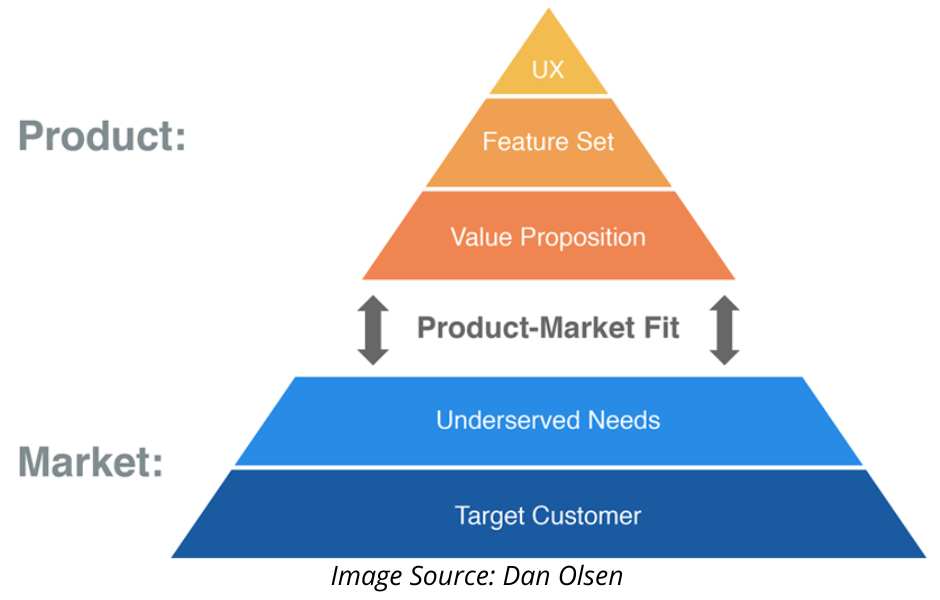
What is a Product Market Fit Canvas?
The Product-Market Fit Canvas is a strategic tool that helps startups and businesses visualize and validate their product-market fit hypothesis.
Like other business model canvases, it provides a structured framework for organizing key aspects of the product-market fit journey. The canvas typically consists of several sections:
- Problem: Describe the specific problem or need that your target market has. This section helps clarify the problem your product is solving.
- Customer Segments: Identify the specific segments of the market that are experiencing the problem you’re addressing. This helps narrow down your target audience.
- Unique Value Proposition (UVP): Define what makes your product unique and why it’s valuable to your target market. This helps differentiate your product from competitors.
- Solution: Describe how your product solves the identified problem. This section helps articulate the features and benefits of your product.
- Channels: Outline the channels you’ll use to reach and engage with your target market. This includes both marketing and distribution channels.
- Customer Relationships: Describe how you’ll build and maintain relationships with your customers. This could include customer service, feedback mechanisms, etc.
- Revenue Streams: Identify how your product will generate revenue. This could include pricing strategies, revenue models, etc.
- Key Metrics: Define the key product-fit metrics you’ll use to measure the success of your efforts. This could include customer acquisition cost, retention rate, etc.
- Cost Structure: Outline the costs associated with developing, marketing, and delivering your product. This helps understand the financial aspects of your business model.
By filling out the Product-Market Fit Canvas, entrepreneurs and business owners can better understand their product-market fit hypothesis and identify areas that may need further validation or refinement.
Download our Free Product Market Fit Checklist and Template to ensure your product meets the needs of your target market, aligns with your value proposition, and drives sustainable growth.
Free Product-Market Fit Checklist & Template
What is a Product Market Fit Matrix?
A Product Market Fit Matrix is a strategic tool to assess and visualize the alignment between a product and its target market. It helps businesses understand how well their product meets market needs and guides decision-making for improvements or pivots.
The matrix typically includes several dimensions to evaluate various aspects of product-market fit.
Components of a Product Market Fit Matrix:
- Customer Segments: Identifies different groups of customers or market segments. Assesses the fit of the product for each segment.
- Value Proposition: Examines how well the product’s value proposition matches the needs and desires of each customer segment. Evaluates the uniqueness and relevance of the product’s benefits.
- Customer Feedback: Collects and analyzes feedback from customers in each segment. Look for patterns of satisfaction, complaints, and suggestions.
- Market Demand: Assesses the level of demand in each customer segment. Considers market size, growth potential, and competition.
- Engagement Metrics: Tracks how actively customers use the product. Includes metrics like usage frequency, feature adoption, and retention rates.
- Sales and Revenue: Evaluate sales performance and revenue generation in each segment. Look for trends in customer acquisition, retention, and lifetime value.
- Competitive Positioning: Analyzes the competitive landscape for each segment. Identifies the product’s strengths and weaknesses relative to competitors.
How to Use the Product Market Fit Matrix
- Identify Customer Segments: Define the different groups of potential and existing customers. Consider demographics, behavior, and specific needs.
- Map the Value Proposition: Outline the value proposition for each segment. Ensure it addresses the unique needs and pain points of the segment.
- Gather and Analyze Feedback: Use surveys, interviews, and data analysis to collect feedback. Look for common themes and insights across segments.
- Evaluate Market Demand: Research market trends and potential demand in each segment. Assess the market size and growth opportunities.
- Measure Engagement and Sales: Track key metrics related to product usage and sales performance. Compare these metrics across different segments.
- Assess Competitive Positioning: Conduct a competitive analysis for each segment. Identify areas where the product excels or needs improvement.
- Visualize the Matrix: Create a visual representation of the matrix with segments on one axis and evaluation criteria on the other. Use a scoring system or color coding to indicate the level of fit for each segment.
- Make Strategic Decisions: Use the insights from the matrix to prioritize segments, adjust the value proposition, or make product improvements. Focus on areas with the highest potential for achieving strong product-market fit.
This matrix helps businesses identify which customer segments have the best product-market fit and where to focus their efforts for improvement or growth.
What is Superhuman Product Market Fit?
Superhuman Product-Market Fit (PMF) is a concept introduced by Rahul Vohra, the founder of the email client Superhuman, to describe an exceptionally high level of product-market fit.
PMF refers to the degree to which a product satisfies a strong market demand. Superhuman PMF, however, takes it a step further, focusing on creating a product that users love so much that they cannot live without it.
Key elements of achieving Superhuman PMF include:
- Intense User Research: Conducting detailed surveys and interviews to understand users’ needs, preferences, and pain points deeply.
- Quantitative Feedback: Measuring user satisfaction using metrics like the “Product/Market Fit Survey,” where users are asked how they would feel if they could no longer use the product. A high PMF is often indicated by at least 40% of users saying they would be “very disappointed” without the product.
- Iterative Development: Constantly refining and iterating the product based on user feedback to enhance its value and usability.
- Focus on Core Users: Identifying and focusing on the specific segment of users who derive the most value from the product, ensuring their needs are met exceptionally well.
- Exceptional User Experience: Creating a product that solves a problem and provides a delightful and seamless user experience, encouraging frequent and enthusiastic use.
By achieving Superhuman PMF, companies aim to build products that create deep user loyalty and engagement, setting them apart from competitors and fostering strong market demand.
Business Tips & Tutorials
- Customer Experience Management (CXM) for a Stellar Customer Journey
- Ultimate Founders Checklist to Launch & Scale Your Startup
- Best Business Courses To Learn Entrepreneur Skills
- 25 Entrepreneur Characteristics Of Successful Business Owners
- How to Find a Business Partner for Entrepreneurial Success
- How To Go From Employee To Entrepreneur Mindset
- How to Build a Successful Freelancer Business
- How to Scale and Grow Your Solopreneur Business
- How To Find and Research Your Niche Market
- How To Write a Unique Selling Proposition (USP)
- How To Write a Business Proposal for Funding
- How To Create a Startup Business Plan In Entrepreneurship
- How To Write The Perfect Elevator Pitch For Investors
- Intellectual Property Rights (IPR) Primer for Entrepreneurs & Creators
- Startup Funding Demystified: Your Roadmap to Financial Success
- How to Create a Compelling Company Vision as an Entrepreneur
Click here to get the Ultimate Founders Checklist
© 2024, Priya Florence Shah. All rights reserved.
Priya Florence Shah is a bestselling author and an award-winning blogger. Check out Devi2Diva, her book on emotional self-care for women. In her spare time, Priya writes science-fiction novels and poetry and chills with her two-legged and four-legged kids.
Discover more from Business & Branding Tips
Subscribe to get the latest posts sent to your email.


